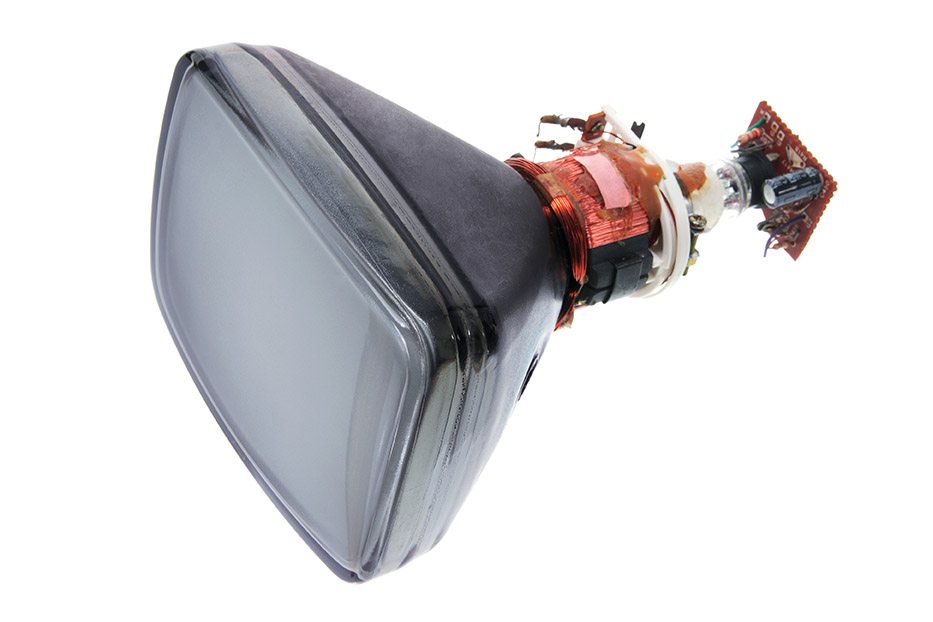
Kuusakoski made waves in the CRT processing world over its decade and a half in the U.S. | Photosync/Shutterstock
Kuusakoski US will close its two Illinois electronics and CRT glass processing facilities and exit the U.S. altogether, refocusing on its European operations after what the company described as severe, prolonged financial challenges in the U.S.
Headquartered in Espoo, Finland, the company operates two U.S. facilities in Illinois, in Peoria and Plainfield. In a Jan. 17 statement, the company announced those facilities will shutter this year, adding the decision came down to economics.
“Following a thorough evaluation of the company’s strategic objectives and extensive consideration of all potential alternatives, Kuusakoski has made the difficult decision to close its business operations in the United States,” the company wrote. “This decision was made following severe prolonged challenges the company faced with profitability in the U.S. market. Despite numerous efforts to stabilise and turn the operation around, the financial performance has not met expectations.”
As a result, the two U.S. facilities “will be closed down and operations stopped in a controlled manner during 2025,” the company added. Local news reporting indicated the company stopped accepting material effective immediately.
The city of Peoria noted Kuusakoski’s closure on its website, directing residents to other nearby electronics recycling options. And the closure caused hauler GFL to stop accepting electronics for drop-off recycling in some locations because the drop-off was tied to Kuusakoski’s presence.
Jason Linnell, executive director of the National Center for Electronics Recycling, which plays a role in several state programs around the country, said the closure will have some impacts on the Illinois state program because the company serviced a few of the program’s collection sites. The program will shift to other contracted electronics recycling companies for those sites, he added.
Kuusakoski’s statement noted the company “will continue to focus on its operations in regions where the company can create the most value in the circular economy.” It operates numerous sites in Finland and Sweden as well as locations in the U.K., Estonia and China. The company primarily handles metals and electronics.
End of a storied run
It’s a sudden end for the U.S. operations that made waves in the e-scrap world numerous times over the last decade and a half.
Kuusakoski entered the U.S. market in 2009 through a joint venture with Vintage Tech Recyclers. Within a few years, the company began positioning itself as a processor of what was a growing industry-wide problem material: CRT glass.
The company first started turning the leaded glass into alternative daily cover for use at a landfill operated by Peoria Disposal Company. The company later rolled out a storage method for CRT glass on the grounds of that landfill in a “mineable” cell for potential future retrieval.
E-Scrap News reported in 2015 that “the strategy is predicated on the notion that at some point in the future a market will emerge for leaded CRT glass,” and company leaders suggested “Kuusakoski would be able to move the glass at no cost, or even get paid for the material” at that unknown future date.
That project ended in 2020, when Peoria Disposal Company opted to stop accepting hazardous waste at its landfill altogether.
Peoria Disposal Company has since been acquired by major North American hauler and landfill operator GFL. E-Scrap News queried GFL about how Kuusakoski’s exit affects plans for the stored CRT glass but didn’t hear back by press time.
The company also developed a CRT glass separation process to segregate leaded from non-leaded glass.
Also during those early years, like many U.S. processors, Kuusakoski and partner company Vintage Tech sent massive amounts of CRT glass to Closed Loop Refining and Recovery, the ambitious emerging downstream outlet for leaded glass that later failed spectacularly. Kuusakoski defended its use of Closed Loop as a downstream, noting Closed Loop was R2-certified and was audited by Ohio state regulators.
In the end, Kuusakoski and Vintage Tech were by far the largest suppliers of glass to Closed Loop, sending nearly 50 million pounds from 2012 to 2016. That later cost Kuusakoski $6 million in a settlement with Closed Loop’s landlords, the largest legal settlement in the case, and spurred other legal actions involving Kuusakoski and OEMs.
This story has been updated to correct that Closed Loop Refining and Recovery at one time held R2 certification, not e-Stewards certification.

